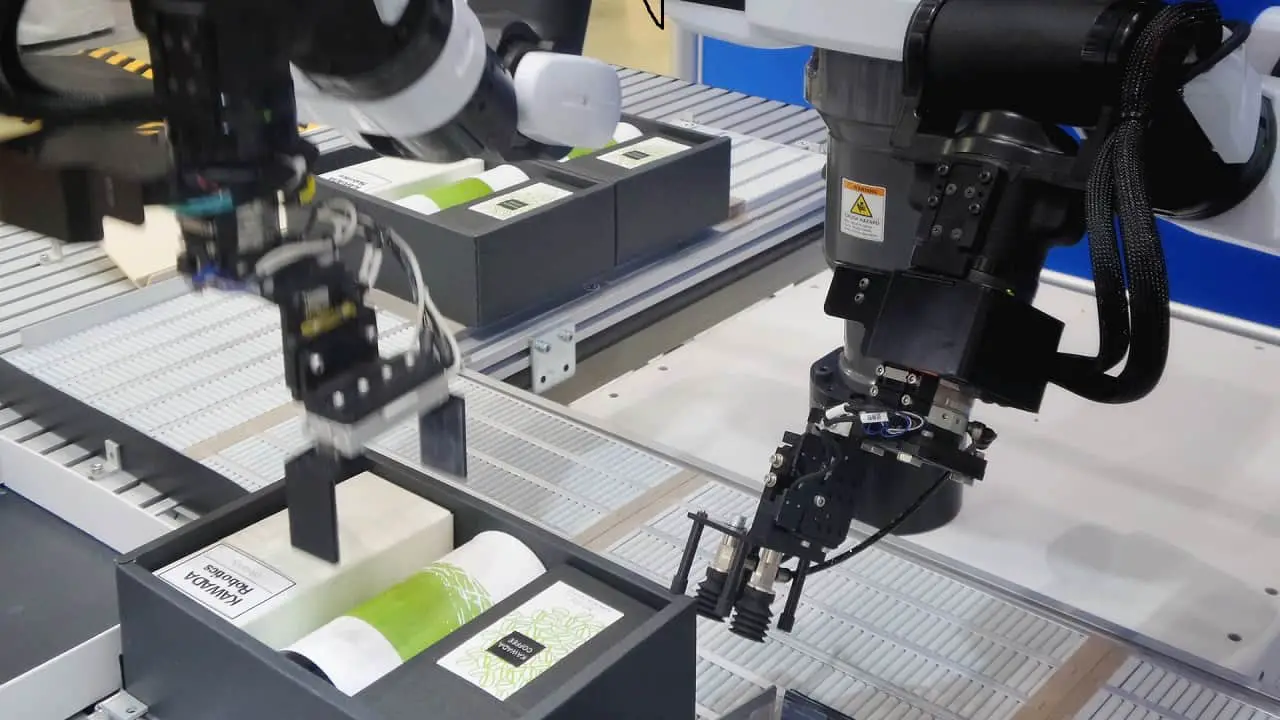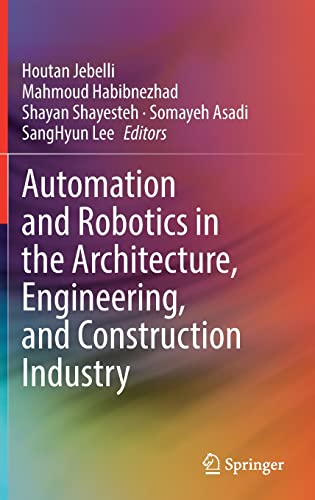Robotics is one of the fastest-growing industries in manufacturing, and for good reason. Robots are capable of doing things humans would never be able to do: they can perform tasks that are repetitive or hazardous, and they have zero need for breaks. But how does a person get started with robotics? Where should they start their research? What books should they read first? We’ve compiled a list of the best books for robotics and automation that will answer these questions – as well as many more – so you can begin your journey in this exciting field today.
Best Book for Robotics and Automation
Best Book for Robotics and Automation
Industrial Automation and Robotics: An Introduction
Industrial Automation and Robotics (Buy Online) is a great resource for learning about the basics of automation in manufacturing. This comprehensive guide covers topics such as how to design, build, program, and troubleshoot industrial robots.
This book covers all of these topics with helpful diagrams and pictures to break down difficult concepts. It also includes an extensive list of references which provides valuable resources for future studying or research. And the authors have a vast knowledge base on industrial processes that they share through their writing making it one of the most thorough texts available.
If you’re looking for more information about robots and how they work, we recommend checking out Industrial Automation and Robotics An Introduction today.
Industrial robots and cobots: Everything you need to know about your future co-worker
Industrial Robots and Cobots (Buy Online) will help you get up-to-speed with all things related to modern robotics and automation principles in real-world work environments. It covers topics like robot design, kinematics, and control systems that are essential to creating your own autonomous robots or cobots (collaborative robots).
The first part of this book is addressed mainly to those who want an overview of what modern robotics is all about; it describes basic concepts such as mechanics, electronics, or vision used in robotic systems.
It also covers advanced topics such as artificial intelligence or machine learning that can be applied today in many real-life situations requiring autonomous decision-making by mobile robots with limited resources available for computations on board (such as microcontrollers).
You’ll also learn about different types of sensors including vision systems which can be used to make your robot more aware of its surroundings.
This book even goes over some common safety issues surrounding industrial robotics which are important for anyone working with these machines or planning on building their own personal robot.
Industrial Robotics 1st Edition
Industrial Robotics (Buy Online) has been designed to provide you with an introduction to Industrial Robotics that can be used towards your degree or a certificate program, and it’s also an excellent reference to use as part of an individual study plan.
Industrial Robots are becoming more and more popular, but there is a lack of easily accessible information on how they actually work.
This book will help you understand industrial robotics systems and how they are used in manufacturing. You’ll get a basic understanding of robot mechanical units, controller architecture, and general software structure.
Once you have this knowledge under your belt, you’ll be introduced to building programs using simple programming instructions to break down complex problems into simpler ones.
Finally, once all of the pieces are put together you’ll move on to creating finished programs that solve real-world problems in production environments.
Industrial Robotics (SIE): Technology, Programming and Applications
Industrial Robotics (SIE): Technology, Programming, and Applications (Buy Online) covers all of the fundamental aspects of industrial robotics including technology, programming and applications which will be useful for students as well as professionals who are interested in learning this field or already working in it.
This book offers an exhaustive coverage on various sub-topics related to industrial robotics such as robot kinematics, dynamics & control; robot vision; force control systems; machine elements (grippers); non-conventional manipulators like parallel manipulators, SCARA robots, etc
Whether you are a student or professional looking forward to entering into an industrial career in robotics, this book will prove beneficial for your needs. You can use it as a textbook or reference guide while studying robotics or as an expert resource when working on projects related to industrial automation using robots.
Springer Handbook of Robotics (Springer Handbooks)
The Springer Handbook of Robotics (Buy Online) provides an authoritative resource on the theory and practice of robotics for researchers and practitioners from academia as well as industry.
This handbook provides a comprehensive introduction to the field, along with a state-of-the-art treatment on key topics such as robot design methods, motion planning algorithms, perception techniques, human-robot interaction issues, and much more.
This book contains contributions from over 200 authors and it has over 2300 pages of detailed information about every field of robotics.
If you want to see everything this book has to offer we recommend checking out the Springer Handbook of Robotics Preview (Click Here)
Robotics: Modelling, Planning and Control (Advanced Textbooks in Control and Signal Processing
Robotics: Modelling, Planning, and Control (Buy Online) is a textbook that strikes an ideal balance between simplicity and rigor. It covers all the fundamentals in a clear way without being watered down. At the same time, it has challenging exercises at the end of each chapter that will prepare you for work in industry after graduation.
This book gives you everything you need to know about modeling robots, motion planning algorithms, and control systems while also preparing you with real-world problems from industrial applications like robotic arms and autonomous vehicles.
The text includes coverage of fundamental topics like kinematics, trajectory planning, and related robotics hardware including actuators and sensors.
Plus, to impart practical skills MATLAB® code is available for free so you can practice programming real robotic simulations on your own to reify your newly acquired knowledge.
Robotic Industrialization: Automation and Robotic Technologies for Customized Component, Module, and Building Prefabrication
Robotic Industrialization: Automation and Robotic Technologies for Customized Component, Module, and Building Prefabrication (Buy Online) covers the latest research on building component production methods that can be used to automate construction processes. It also discusses current trends in the industrialization of construction as well as concrete and wood components manufacturing technologies.
In this handbook, you will find a comprehensive overview of the most recent developments in robotic systems theory, their integration with automated control systems, and their application to large-scale prefabrication for modularized buildings.
Plus, you’ll learn about new advances in robot technology for use in various applications such as assembly robots, handling devices used by workers or machines (for example forklift trucks) inside a factory or warehouse environment, and much more
Robot-Oriented Design: Design and Management Tools for the Deployment of Automation and Robotics in Construction
Robot-Oriented Design (Buy Online) explains basic concepts, methods, tools, and techniques for designing robot-oriented construction systems. You’ll learn how to develop an integrated approach to robotics and automation that helps improve efficiency while reducing cost over time.
The author presents a comprehensive view on how to use advanced technologies in construction; from planning through realization and operation. And he provides insights into the development of automated production lines as well as product life cycle management approaches that help you reduce costs while improving efficiency at every step of the way.
Automation and Robotics in the Architecture, Engineering, and Construction Industry
Automation and Robotics in the Architecture, Engineering and Construction Industry (Buy Online) covers the fundamentals and applications of robotics, autonomous vehicles, and human-perceptive machines at construction sites. Through theoretical and experimental analyses, it examines the potential of robotics and automated systems for current and future fieldwork operations and identifies the factors that determine their implementation and adoption at scale.
The construction industry is facing a shortage of skilled tradesmen and this shortage will continue to grow as the demand for new buildings increases.
Current trends in technology are making it easier than ever before to implement automation on construction sites, but there has been little research done into how these technologies can be used effectively in the field.
This book explores robotic systems that are already being implemented on construction sites around the world and uses real-world examples to predict when robots will become commonplace at every stage in the majority of new construction projects.
It also looks at what factors influence their implementation, adoption, ubiquity, and growth within an industry that employs millions of people each year.
Intelligent Automation: Learn how to harness Artificial Intelligence
Intelligent Automation: Learn how to harness Artificial Intelligence (Buy Online) outlines what IA is, why it matters, and how to get started with hyper-automation. It also covers the most important aspects of this technology – from low-code platforms that make it easier to build automation software, to machine learning algorithms that learn on their own with no human input required.
Packt Learning Robotic Process Automation
Packt Publishing’s new book “Robotic Process Automation” helps you master RPA (Buy Online) so you can drive your business forward with automation and reap its benefits quickly. This practical guide provides actionable insights into implementing RPA within your organization, including advice on what software tools will work best for different tasks and scenarios as well as tips from top practitioners who have implemented RPA successfully in real-world situations.
The Robotic Process Automation Handbook: A Guide to Implementing RPA Systems
The Robotic Process Automation Handbook (Buy Online) will teach you everything you need to know about implementing an RPA system into your workflow. It covers topics such as how to develop a strategy for automation, how to deal with pushback from employees, and what systems are most effective at automating tasks. This book also provides case studies so you can see real-world examples of companies that have implemented RPA successfully before making your own decision on whether or not it is right for your company.
Robotic Process Automation: Guide To Building Software Robots, Automate Repetitive Tasks
Robotic Process Automation: Guide To Building Software Robots, Automate Repetitive Tasks (Buy Online) will give you a clear picture of how RPA is changing business operations, as well as provide you with practical steps on how your company can benefit from implementing Robotic Process Automation. By reading this book, you’ll discover all about the future of automation technology – cognitive technologies, artificial intelligence, and machine learning – and learn how they’re expected to dramatically enhance the speed and efficiency of business in the machine age.
Table of Contents
















